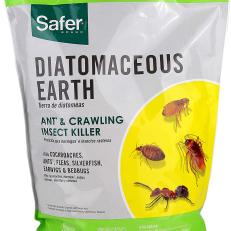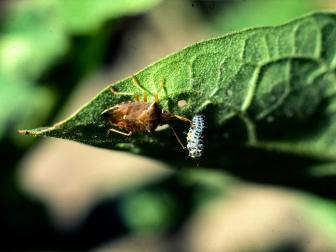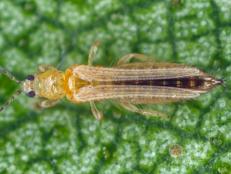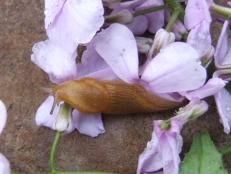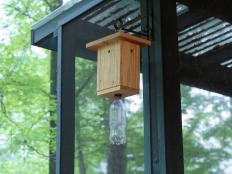How to Get Rid of Stink Bugs in My House
Brush up on stink bug basics and say so long to these indoor invaders with these quick, natural ways to keep stink bugs at bay.
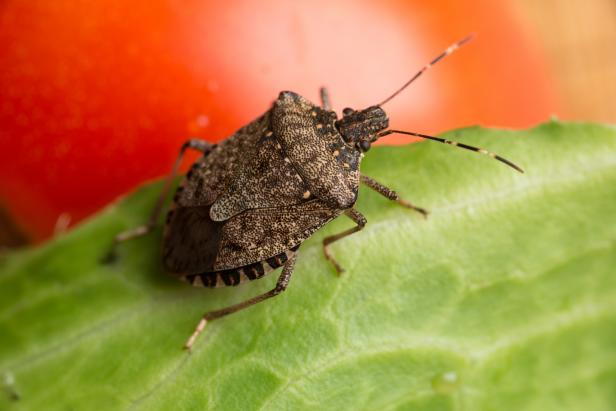
VW Pics
Halyomorpha halys, the brown marmorated stink bug, stink bug on a tomato. Inside homes, stink bugs tend to congregate on upper floors and in tight spaces. (Photo by: Edwin Remsburg/VW Pics via Getty Images)

Stink bugs feel like nature’s revenge for every insect you’ve ever squished. They get their name from the foul stench they release when they’re threatened or disturbed. It’s a smell that’s tough to describe. Chemically it contains compounds found in cilantro, but the odor is stronger, with notes of dirty socks, rotting fruit and paper-mill pulp. In short, it stinks — and worse, it lingers.
What Are Stink Bugs?
Stink bugs are said to have arrived on our shores in the Nineties after hitching a ride in shipping containers from China and have now made themselves right at home. Though they are a major crop pest, they don’t bite, sting or pose a health risk. Brown marmorated stink bugs — named for the brown marbled pattern on their backs — are an annoyance, especially if you smash them and release the eponymous smell that keeps predators away. They're also a sure way to put a damper on your nesting since bugs enter your home when the weather turns cool and tend to stay put in walls or attics until spring. So, yuck.
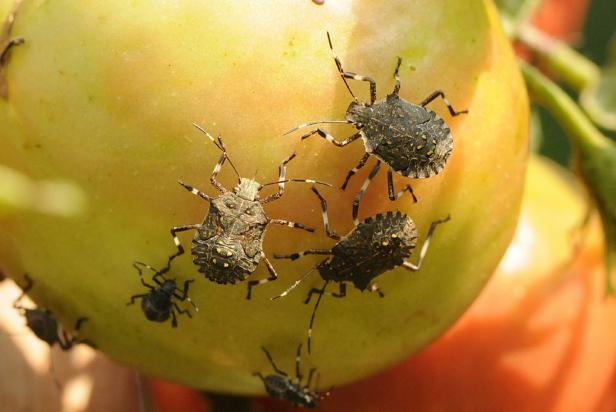
Michael J. Raupp at BugofTheWeek.com
Stink bugs are intrepid explorers inside the home, lumbering along any surface — countertop, couch, toaster or bed.
Why Stink Bugs Come Indoors
Seasonal cues trigger stink bugs' search for winter quarters; the shortening days and falling temperatures sending them scuttling for cover. If they sheltered beneath tree bark or mulch, it would be one thing. But they prefer sharing your home over winter, piling into cracks and crevices by the thousands. Researchers once found 4,000 in a bread box size container — and 30,000 inside an outhouse-size building.

Julie Martens Forney
Stink bugs have voracious appetites — and they aren’t picky about what they eat. The brown marmorated stink bug is the smelly critter that invades homes in fall. Here it’s hiking along a Tropicanna canna leaf.
Why We See Stink Bugs In Our Homes in Spring
When temperatures outside rise, stink bugs that have overwintered in your home start looking for ways to go back outside so they can feed and mate. The best way to avoid seeing these critters in spring is to keep them from finding a winter home.
Once stink bugs hide indoors, they stage a slow-motion home invasion all winter long. They’re intrepid explorers, lumbering along any surface — countertop, couch, toaster or bed. They like warm places, which means they’re happy to jump into your shower or morning coffee. When they fly, they bump and blunder into things, sounding like helicopters with serious mechanical issues.
The reason for a stink bug’s disoriented behavior indoors is diapause, a sort of insect hibernation. This zombie-like state allows them to move, just not with much finesse. They typically appear when a winter warm spell fools them into thinking it’s spring. Instead of finding their way outdoors, they emerge in your living spaces — and chaos ensues.
The good news is that they don’t eat, bite or reproduce indoors. Like Yankee snowbirds flocking to southern shores, they’re just overwintering. When spring arrives, they’ll head outside to kick off a new season of munching and mating. The bad news is that if you spot a few, there's likely an army waiting to march into view, one at a time.
Following are some tips for keeping these unwanted visitors out of your home. Even better, these tips are environmentally friendly, natural and creative ways to combat these winter pests.
How to Get Rid of Stink Bugs
Inside, stink bugs tend to congregate on upper floors and in tight spaces. That’s why they often tuck into drapery folds and walk along the tops of walls. It’s why they mass in attics and crawl spaces above garages. So what do you do when you spot a stink bug on the move inside? It’s best to deal with them one by one. Try one of these techniques.
1. Use Essential Oil
Kill two birds with one stone by making your house smell great even as you are banishing stink bugs. Mix 10 drops of mint essential oil with 16 ounces of water and spray at interior entry zones like windows and doors.
2. Neem Oil
This plant-based natural insecticide may take a week or so to work since it interferes with bugs' instinctual behaviors. Combine 32 ounces water and two teaspoons neem oil and spray at stink bug entry points like windowsills.
3. Spread Diatomaceous Earth
This earth-friendly pesticide powder made from natural rock can be placed at entryways like doors and windows both inside and outside and breaks down the stink bug’s protective exoskeleton so they eventually die of dehydration.
Buy Supplies
4. Garlic Spray
Combine two cups water and four teaspoons of garlic powder or a handful of garlic cloves and spray on indoor windowsills where stink bugs are likely to enter your home.
5. Vacuum the Critters
For bad infestations, some homeowners buy a small shop vac dedicated for stink bug use. You can also use a vacuum you already have, but proceed with caution with this tip. This method only works for vacuum cleaners with bags. And you’ll need to throw the bug-filled bags away immediately to prevent a stink bomb from developing.
6. Soapy Water
A stink bug’s natural reaction to any perceived threat is to drop straight down. Fill a wide mouth jar with soapy water (add some vinegar for extra killing power), move it into position beneath a stink bug, and most often it will drop right into the suds and drown. Combine equal parts hot water and dish soap in a spray bottle and spray on windowsill entry points.
7. Fly Tape at Entryways
While it isn’t the prettiest of methods, strips of fly tape spread on windowsills and at other entryways will catch these critters.
8. Safeguard Your House
Prevention is key in combatting these critters. Caulk all cracks and crevices where bugs can enter. Place fine mesh over air vents to keep bugs from trying that sneaky alternative entryway.
9. Dryer Sheets
Dryer sheet odor offends stink bugs, so rubbing dryer sheets on window screens or at home entry points can be a great way to keep bugs at bay.
10. Sticky Pad
Cover a dry sweep mophead with a sticky lint remover sheet, and use it as a long-handled stink bug catcher. It’s perfect for grabbing any high-climbing bugs.
11. Night Light
Before bed, fill a wide pan with soapy water and place it in the room with the most stink bugs. Place a small light so it hangs over the dish. Overnight the stink bugs will flock to the light, fall into the suds and drown.
Avoid Chemical Insecticides
It’s tempting to douse the stinkers with an all-purpose insecticide, but few actually work to kill these bugs (they often raise from the dead a few days later). Also, if you do manage to kill them, their bodies may attract other insects to feed on them.
How To Keep Stink Bugs Out
Stink bugs typically gather on warm, west-facing walls and enter buildings via cracks and crevices. Once they find an ideal spot, they release pheromones, chemical signals that beckon more stink bugs to join the party. Your best bet is to keep them out in the first place. Here are some tips and tricks.
1. Block Points of Entry
Use caulking to replace cracked seals around utility entry points, doors and windows. Inspect joints where two different materials meet, like wood and concrete block or wood siding and brick. Caulk the cracks as needed.
2. Check Doors
Look over weather stripping and sweeps on doors, including the rubber seal on garage doors. Replace as needed.
3. Inspect Screens
Check for holes and patch as needed. Make sure the screens fit tightly into their space. Rub screens with dryer sheets — some homeowners say it works to keep the bugs from blanketing screens.
4. Squish Some
Some homeowners report that if they squish a few stink bugs where they start to gather, it seems to repel other ones. Some folks even whip up a stink bug spray (stink bugs and water in a blender, strain out any solids) that, when sprayed on a home, seems to help deter the bugs.
Keeping Ladybugs Out of the House
The best approach is to prevent them from coming in by sealing cracks around windows, doors and roof soffits.
Stink Bugs in the Garden
Because the stink bug releases its unpleasant scent when crushed, drowning may be preferred to squashing.








